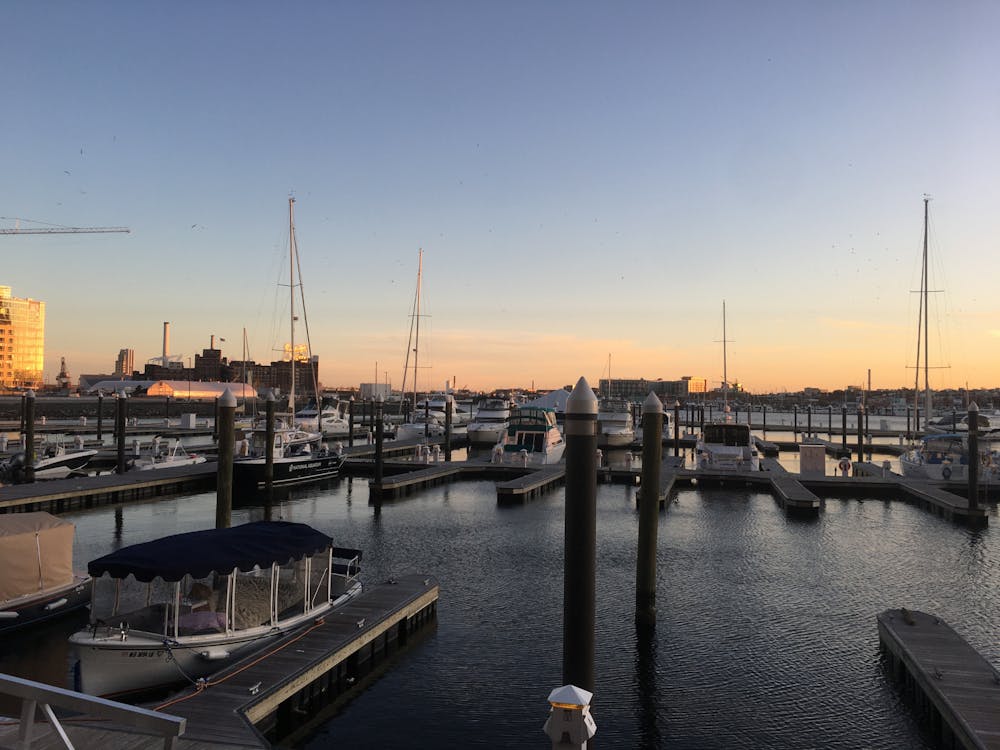Maryland Governor Larry Hogan issued an executive order to tighten COVID-19 restrictions on Nov. 17, which will go into effect on Friday, Nov. 20 at 5 p.m., in response to the rising number of cases and deaths related to the pandemic. The Maryland Department of Health also declared an emergency order to prevent outbreaks at hospitals and nursing homes.
Hogan’s recent executive order mandates all bars and restaurants to close at 10 p.m., though takeout and delivery services will still be permitted after the cut-off time. The maximum capacity for retail stores, religious facilities and all recreation centers will be reduced from 75% to 50%, and all public stadiums and racetracks will be closed off to fans.
Face coverings will continue to be required in all public indoor locations and outdoors where social distancing is not possible. In Baltimore, masks are required in all outdoor spaces regardless of one’s ability to social distance.
In a press conference on Nov. 17, Hogan emphasized the severity of the virus by reminding citizens that Maryland remains in a state of emergency.
“This is not the flu. It’s not fake news. It’s not going to magically disappear just because we’re all tired of it and we want our normal lives back,” he said. “We are in a war right now, and the virus is winning.”
On Nov. 12, Baltimore moved back to Phase 1, limiting indoor capacity to 25%. Montgomery County and Prince George’s County have also restricted indoor seating capacity at 25%.
According to Maryland’s contact tracing data, most of the new cases were traced back to citizens who were exposed to COVID-19 in bars and restaurants. Hogan urged citizens to actively take part in contact tracing measures. Disease investigators have reported that many people refused to comply with these public health protocols.
Sophomore Hannah Yamagata, a resident of Harford County, expressed her support for Hogan’s executive order and its timing. She explained that if he had instituted these new restrictions before the second wave, people would be more upset because they would not understand the gravity of the situation.
According to Yamagata, many high schoolers in her town are upset about not getting their typical school-sponsored events. In response, they have been hosting gatherings without practicing social distancing protocols.
“I know that where I’m from, no one really cares at this point, so it’s important that he’s tightening restrictions,” she said. “For example, since a lot of public schools are 100% online, I know a lot of students are hosting fake HOCOs and all of their friends come and don’t wear masks to take photos.”
Sophomore Juneau Wang, a resident of Potomac in Montgomery County, highlighted that the phenomenon known as “pandemic fatigue” may have caused people to relax in adhering to public health protocols.
“What has contributed to the vast cases is the pandemic fatigue, which is a mentality where people think, ‘Well, I’ve done what I need to do for months now, and I’m bored of this, and I’m going to pretend that everything is normal,’” they said.
COVID-19-related hospitalizations in Maryland doubled from last week to more than 1,000 for the first time since June, with an additional 26 deaths and more than 2,000 new cases.
As per the Maryland Department of Health’s orders, visits to nursing homes will be limited and any visitors will have to show proof of testing negative at least 72 hours before being allowed to enter. Additionally, all nursing home staff will be required to be tested for COVID-19 twice a week, and all residents will have to be tested once a week.
Hogan reported that 19 hospitals are already above 90% capacity, despite the additional 6,000 beds provided. Consequently, hospitals that are at full or nearing full capacity will be allowed to transfer patients to other hospitals with more space.
Wang stressed that since the daily number of cases is even higher than it was in March, people need to start thinking and acting rationally.
“I believe we should have never left the restrictions in the first place over the summer,” they said. “It is a little late since we are seeing a surge in cases but of course the surge can always get worse, and there’s no time like the present to implement these, especially before the holidays.”
To set an example, Hogan canceled his family’s Thanksgiving plans. He also urged Marylanders to take extra precautions during the holiday season, including getting tested before traveling and avoiding high-risk states.
“I just want to remind the people of Maryland that we have come too far and the stakes are too high. This virus does not care if you’re tired of it,” he said. “It does not care if you have holiday plans. It doesn’t care who you voted for and it will not let us move on just because we all desperately want to get back to our normal, pre-COVID lives.”





